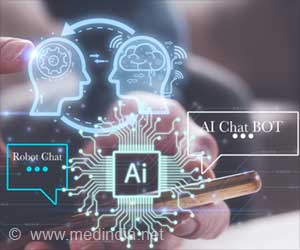ornell University researchers have created a fiber-optic sensor that combines low-cost LEDs and dyes, resulting in a stretchable skin that detects deformations such as pressure, bending and strain.

TOP INSIGHT
Fiber-optic sensor or stretchable "skin senor" detects deformations such as pressure, bending and strain.
Read More..
Researchers drew inspiration from silica-based distributed fiber-optic sensors and developed a stretchable lightguide for multimodal sensing (SLIMS). This long tube contains a pair of elastomeric cores. One core is transparent; the other is filled with absorbing dyes. Each core is coupled with a red-green-blue sensor chip to register geometric changes in the optical path of light.
The researchers designed a 3D-printed glove with a SLIMS sensor running along each finger, powered by a lithium battery and equipped with Bluetooth so it can transmit data to basic software.
"Right now, sensing is done mostly by vision," Shepherd said. "We hardly ever measure touch in real life. This skin is a way to allow ourselves and machines to measure tactile interactions in a way that we now currently use the cameras in our phones. It's using vision to measure touch. This is the most convenient and practical way to do it in a scalable way."
Bai and Shepherd are working with Cornell's Center for Technology Licensing to patent the technology, with an eye toward applications in physical therapy and sports medicine. Both fields have leveraged motion-tracking technology but until now have lacked the ability to capture force interactions.
"VR and AR immersion is based on motion capture. Touch is barely there at all," Shepherd said. "Let's say you want to have an augmented reality simulation that teaches you how to fix your car or change a tire. If you had a glove or something that could measure pressure, as well as motion, that augmented reality visualization could say, 'Turn and then stop, so you don't overtighten your lug nuts.' There's nothing out there that does that right now, but this is an avenue to do it."
Source-Medindia
 MEDINDIA
MEDINDIA

 Email
Email





